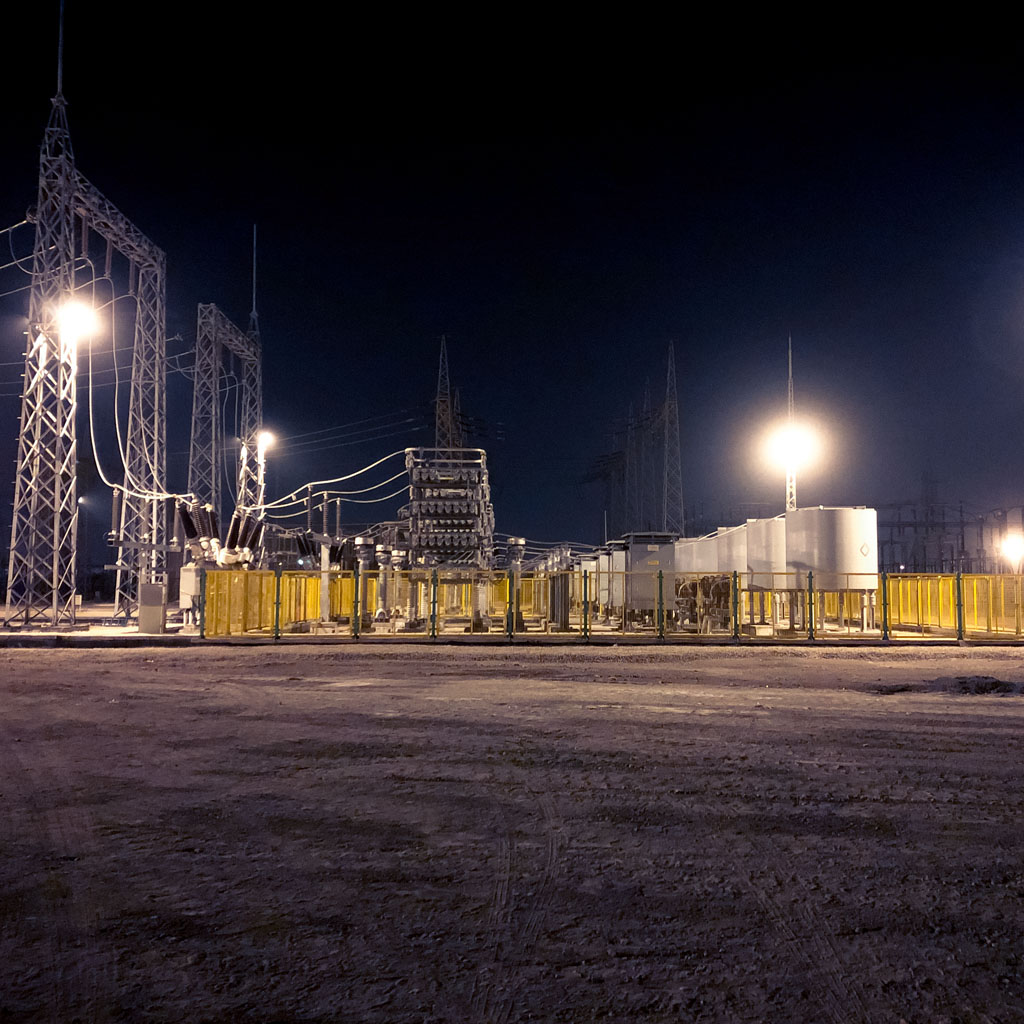The energy revolution brings the threat of unstable power grids withit. Therefore, transmission grid operators desperately need a solution. Together with its partner Omexom, Reinhausen is developing optimized technology for stabilizing reactive power — which will keep the power supply predictable into the future.
It is a hot summer weekend in the year 2035. Many families are spending time out at the lake. The beach is full, children are jumping off floating wooden docks. Sunlight reflects on the water. There is not a cloud in the sky, but a pleasant, cooling wind is blowing. Solar cells and wind turbines are producing energy en masse. No one on the beach spares a single thought that the line voltage might increase to critical ranges.
In grid control centers, on the other hand, German system operators are on high alert. Control reserves are at the max and there is the threat of emergency shut-off for some energy producers. An overload occurs and some people will not have power when they come home. Is this our future?
No stable grid without innovation
After events such as the 2011 reactor meltdown in Japan and recent heat waves, the German federal government resolved to implement a rapid energy revolution: by 2022, Germany will phase out nuclear power, and by 2038 at the latest, it will also divest itself of coal power. However, by deactivating these power plants with large generators, grid operation will be more vulnerable to interruptions. Especially on the extra-high and high-voltage levels, transmission grid operators will lose an important means of keeping the voltage in the transport lines stable: reactive power. It is regulated by the generators of these power plants. If these go away, a replacement will be needed urgently.
“Without technologies to stabilize our grids, critical situations would be everyday occurrences in the future.” Thomas Brückner, Reinhausen Power Quality
Thomas Brückner of the Power Quality (PQ) business area has worked on this problem extensively. “From our conversations with grid operators, we know that there was significant trouble in the grid after existing coal power plants were deactivated. Without technologies to stabilize our grids, critical situations would be everyday occurrences in the future.”
That is why Reinhausen Power Quality worked with Omexom Umspannwerke GmbH to offer grid operators an alternative. Omexom develops energy infrastructure systems for energy generation and distribution. Together, the two partners optimized a tried-and-true technology for stabilizing the power supply when placed at suitable grid nodes: MSCDN systems.

MSCDN stands for mechanically switched capacitor with damping network.“The system consists of a mechanically switched capacitor bank with a damping network. Its primary task is the provision of reactive power for voltage regulation. If more power is drawn from the grid than is produced, such as because of hundreds of thousands of people connecting their cars to charging stations at once, the line voltage drops. If more energy is produced, perhaps because the weather is ideal or because consumers currently require less, the voltage increases—in both cases, this can cause faults in the grid.
MSCDN systems improve the power quality and
effectively dampen the resonances in the grid. The challenge for PQ and Omexom was to optimize the MSCDN system so that it satisfies the strict requirements of the four transmission grid operators. They are responsible for nearly 36,000 kilometers of extra-high-voltage lines, which are ultimately the lifelines of the economy. PQ und Omexom therefore performed numerous tests and simulations —also taking into consideration future grid expansion scenarios. After all, in the coming years, several thousand kilometers will be added to the transmission grid.
An efficient system
he system has a compact design. It is designed as a C‑type filter circuit with distributed capacitances and damping resistance. Efficiently designed reactors are also used that produce only low losses. The system can be activated to be phase-selective using a special circuit breaker. In case of high utilization, it supplies capacitive reactive power. With a low load, it offers protections against overvoltage —which is sufficient in many situations. Complex dynamic systems, such as the STATCOM (rectifier transformer) and static VAR compensators (SVC), are used for continuous regulation.
“Many solutions have now appeared which enable renewable energy to be implemented even without central producers.” Volker Erfurth, Omexom
The implementation of these systems makes Germany better prepared for the changes that come with the energy revolution. But this was not obvious. “When renewable energy got going, all the energy suppliers saw these enormous problems and said it couldn’t be done in this time span,” says Volker Erfurth of Omexom. “But since then, there have been many solutions that made renewable energy feasible despite non-continuous supply from central producers.”
There is still substantial need for investment, as the need for electricity is greater than ever—be it due to electric mobility, the increasing demand for hydrogen in the future, or computing-intensive information technology. This means there is an urgent need for action. Erfurth says, “But I am optimistic that technical solutions such as the MSCDN system will enable a continuously stable grid.”
The collaboration of the two companies is thus an important step in this direction. Several systems are already in operation. Brückner adds, “It is important to all of us that we make a valuable contribution to the energy revolution, climate protection, and grid stability in the German, and thus also European, combined system.” This means that in 2035, people will be able to enjoy the sunshine in peace.
REINHAUSEN INSIDE
Reinhausen offers corresponding system solutions, tailored to customers’ needs, for the provision and generation of reactive power in high-voltage and medium-voltage grids in order to allow for the future-oriented integration of dispersed renewable energies and bring about the energy revolution. GRIDCON® MSCDN (Mechanically Switched Capacitor with Damping Network) systems are an important element for providing static reactive power and resonance damping and are used for multi-stage regulation of reactive power and voltage.
YOUR CONTACT
Do you have any questions about MSCDN systems?
Thomas Brückner would be happy to help:
T.Brueckner@reinhausen.com
